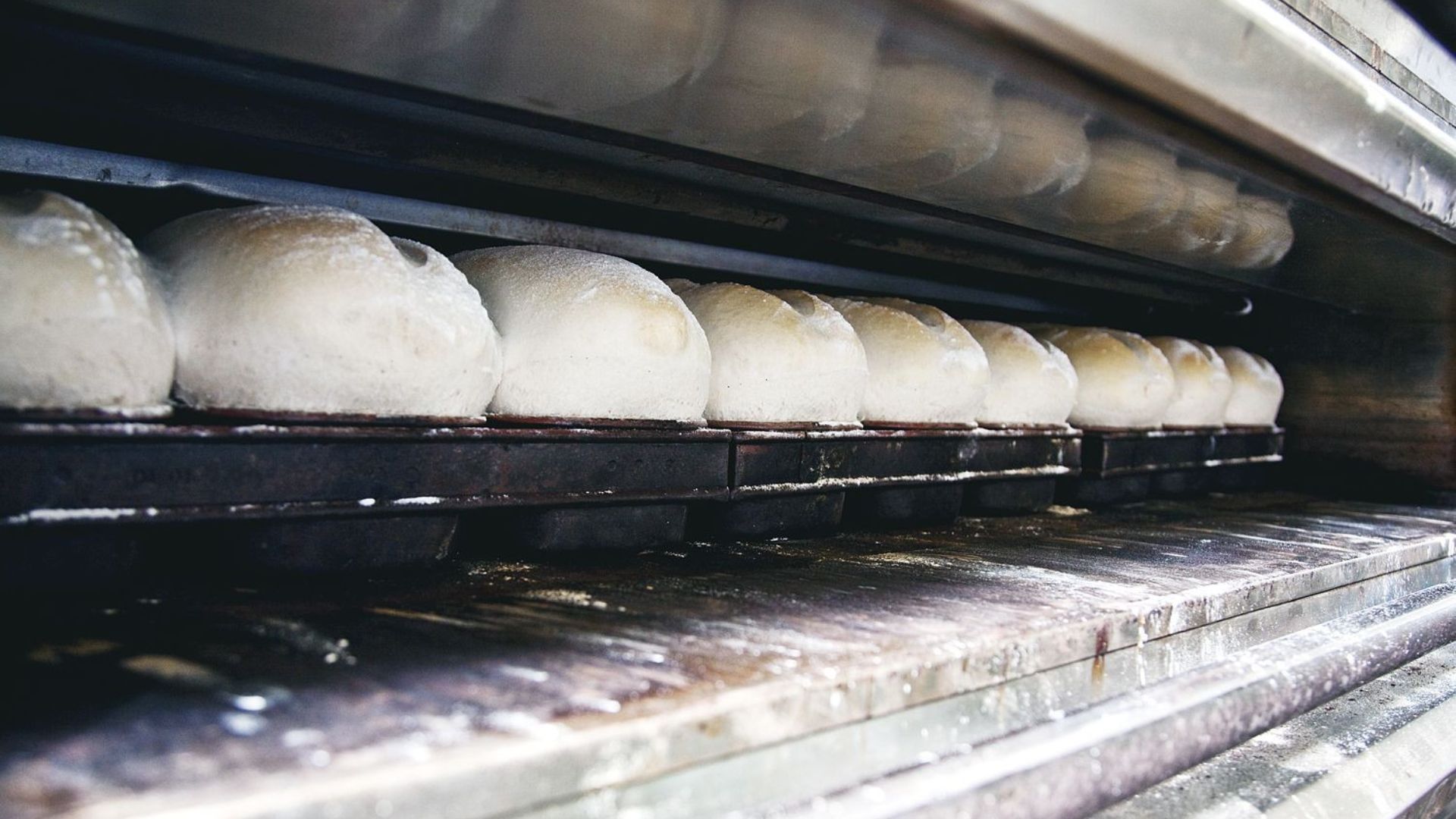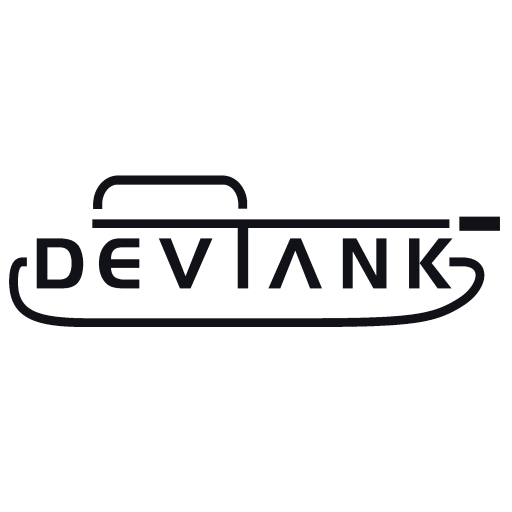The food and drink industry is the nation’s largest manufacturing subsector by far and obviously a vital industry for jobs, exports and regional growth. Yet margins are being squeezed by volatile energy costs, labour gaps, waste, and fast-moving packaging rules. If you’re looking for practical, near-term wins (with clear ROI) and a roadmap to modernise operations, this expert insight from Devtank is for you.
We summarise the most pressing UK-specific challenges from recent, trusted sources like BDO and outline how Devtank can help with targeted, measurable solutions that result in cost savings, predictive maintenance implementation, energy and waste reduction, and data you can act on immediately.
The challenges the sector is facing
1) Energy price pressure remains a board-level risk
Non-domestic electricity and gas prices eased through much of 2024, but smaller sites still face higher unit costs than larger peers, and price swings continue to complicate planning and contracts. Many industrial users report that power remains a competitiveness issue.
2) Skills and labour shortages, especially in technical roles
Food and drink manufacturers report persistently higher vacancy rates than wider UK manufacturing, with hard-to-fill roles across engineering, technical/QA and production. That drives overtime, downtime, and rising maintenance backlogs for many companies.
3) Packaging regulation (pEPR) is moving from theory to bills
Extended Producer Responsibility for packaging starts invoicing in October 2025, with base fees confirmed and future fee modulation linked to recyclability. Producers must also compile and submit detailed “nation data” on where packaging is discarded. Cost visibility and data capture have become urgent.
4) Food waste is still a multi-million-tonne cost centre
Food waste across the UK supply chain remains significant, with the latest WRAP and Parliamentary briefings underscoring both volume and emissions impact, meaning real money on the factory floor in giveaway, yield loss, and out-of-spec product.
5) Safety, uptime and insurer expectations are tightening
HSE statistics show manufacturing remains a higher-risk sector for injuries and ill-health, keeping pressure on asset integrity, maintenance practices and line changeovers. Better condition monitoring reduces risk and unplanned stoppages.
6) Macro headwinds meet subsector resilience
Food and drink continues to dominate manufacturing GVA (~21%) and has shown robust output compared with the sector average, but investment plans have been under pressure, reinforcing the need for rapid-payback improvements.
How Devtank helps with fast ROI and low-disruption solutions
We specialise in practical Industry 4.0 and IoT solutions for regulated, high-throughput environments. Our approach is hardware-agnostic and open so you can start small, prove value on one line or factory, then scale.
1) Predictive maintenance that really does predict
What we do:
- Deploy plug-and-play sensors (vibration, temperature, current) on critical assets like motors, pumps, gearboxes, compressors, ovens, and chillers.
- Stream data to a secure edge gateway; run anomaly detection and RUL (remaining useful life) models to spot bearing wear, imbalance, misalignment, and thermal drift.
- Alert the right technician with context (asset ID, fault signature, recommended action).
Typical wins:
- 20 to 40% fewer unplanned stoppages on monitored assets.
- Longer component life (bearings, belts), fewer secondary failures, safer interventions.
- Evidence for insurers and auditors (HACCP/CCP equipment integrity).
2) Energy intelligence that cuts bills (not output)
What we do:
- High-resolution sub-metering across lines, process steps and utilities (electricity, gas, steam, compressed air, refrigeration, water).
- Real-time dashboards and exception alerts for overnight drift, weekend baseload, or spikes during CIP/sterilisation and changeovers.
- Compressed-air leak analytics: rank leaks by monetary impact; track repair closure.
- Refrigeration performance monitoring (evaporator/condensing delta-T, defrost cycles) to nudge setpoints and reduce energy without risking food safety.
Typical wins:
- 8–15% electricity reduction within 12 weeks by attacking baseload and leaks first.
- Clear line-level cost per SKU/shift for better scheduling and margin control.
- Data packs to support energy tenders and site consolidation decisions.
(These savings directly target the pain points highlighted in recent Ofgem research, which is available to read here: https://www.ofgem.gov.uk/sites/default/files/2025-04/OFG2296_State%20of%20the%20Market%20Report.pdf )
3) OEE and bottleneck analytics for throughput and yield
What we do:
- Non-intrusive line monitoring (digital/analogue IO, OPC-UA, or retrofit sensors) to calculate availability, performance and quality.
- Automatic downtime classification with operator prompts, reason codes feed Pareto analysis.
- Changeover timing and recipe management to reduce giveaway/under-fill and speed to spec.
Typical wins:
- 3 to 7% sustained OEE uplift (often more) as chronic micro-stops and slow cycles are fixed.
- Better right-first-time quality; reduced rework and waste in the first hour after changeover.
(These directly support waste-reduction and productivity aims flagged by WRAP and Parliament briefings, which you can read here https://www.wrap.ngo/resources/report/uk-food-waste-food-surplus-key-facts )
4) EPR and sustainability data without the spreadsheet chaos
What we do:
- Capture packaging material/format/weight at source (by SKU and run) and map to dispatch data so you can generate pEPR “nation data” and model fee exposure by design choice.
- Track recyclability attributes to prepare for 2026 fee modulation.
- Build supplier scorecards (glass vs. PET vs. can) to make costs visible before you buy.
Typical wins:
- Hours (sometimes days) saved per month on reporting, fewer errors and rework.
- Early visibility of year-end liability; stronger business case for packaging optimisation.
5) Compliance and food safety telemetry
What we do:
- Temperature/humidity logging for chilled stores and distribution; automated alarms and audit trails.
- CIP cycle verification (conductivity, temperature, flow) to ensure cleaning efficacy and cut water/chemical use.
- Digital records to support SALSA/BRCGS, retailer audits and HSE expectations.
Typical wins:
- Fewer quality incidents and product holds; simpler audits; lower utility and chemical spend.
Where to start
Well, first, get in touch with Devtank because we’ve already gotten food and drink manufacturers started with their monitoring. Typically, the 90 days of monitor deployment look like this:
- Baseline: install OpenSmartMonitor plug and play on one value stream (e.g. liquids filling line or ovens). Choose by identifying at least the top 3 losses you suspect, like baseload, leaks, and your most failure-prone asset.
- Scale and automate: extend metering to all high-load users, connect packaging/master data for pEPR, and expand predictive analytics to critical utilities (refrigeration, compressed air, hot water).
- Sustain: weekly loss reviews; monthly savings reports tied to energy invoices, maintenance CMMS data, and waste/rework KPIs. Use your dashboard for accurate data
We’ll tailor this to your site constraints (cleanrooms, ATEX areas, hygiene windows) and your existing PLC/SCADA estate so you get results without ripping and replacing. And if you need a tailored / bespoke dashboard creating our software development team can do that for you.
Why Devtank
There are lots of reasons, like we are experienced and a friendly bunch of people to work with, oh, and we have helped a few food and drink manufacturers achieve amazing results so far. But here are some more technical reasons:
- Open and interoperable OpenSmartMonitors will work with your existing systems, PLCs and historians – there is no lock-in.
- Fast ROI focus because we prioritise obtaining measurable reductions in downtime, energy, waste and admin time.
- Built for regulated environments. Traceable data, secure architectures, and audit-friendly records.
- From pilot to portfolio. Start on one line; scale across sites with templates and shared analytics.
Let’s talk about your site
Whether you’re battling unpredictable energy bills, preparing for packaging EPR, or wanting fewer Friday-night callouts, we can help you deliver wins in weeks, not years.
- Free opportunity scan: send us a one-page snapshot (utility bills, top 10 assets, changeover times, and packaging formats). We’ll outline the top three savings moves.
- On-site pilot: We deploy OpenSmartMonitors on one line/utility for 6–8 weeks and present a quantified business case to your leadership team. There’s a cost for this pilot, which our team can share with you.
- Roll-out roadmap: clear milestones, governance, and training so gains stick. Our team are on hand via our easy-to-access Help Desk.
Ready to reduce cost, risk and waste? Get in touch, and we’ll put together a focused pilot for your factory.


